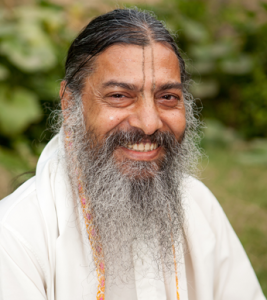Language: English with French Translation
Duration: +-20 hours
Place: Virignin (France) - Pierre Chatel
Year: April 2017 - August 2017
_______________________
Satyanarayana Dasa
Bhagavad Gītā has eighteen chapters, and each is designated as a type of yoga. The word yoga has many different meanings. In the Gītā it is used principally in the sense of the means undertaken to accomplish or to be united with one’s goal. Therefore, the word yoga can also be translated as “path,” as has been done here especially in the chapter titles. There are primarily three different types of yoga, namely, karma-yoga, jñāna-yoga, and bhakti-yoga. When we employ karma, or selfless action, for uniting with or reaching our goal, it is called karma-yoga. Similarly, when we cultivate jñāna, or the intuitive insight of our conscious identity with the Absolute, it is called jñāna-yoga. When bhakti, or devotion, is adopted as the means of attaining unity in love, it is called bhakti-yoga. In the case of the latter, bhakti is not only the means but also the goal.
https://www.jiva.org/gita-discourses-in-ancient-mo...

When Krishna gives His love to someone He takes away all material attachments. Not a bad bargain – to get Krishna prema in exchange of material possessions which are temporary anyway.
info@hindi.jiva.org for inquiries about Jiva Institute and guesthouse bookings
For website question please use our contact-form»
380 Sheetal Chaya
Raman Reti, Vrindavan
UP 281121, India
© 2017 JIVA.ORG. All rights reserved.
